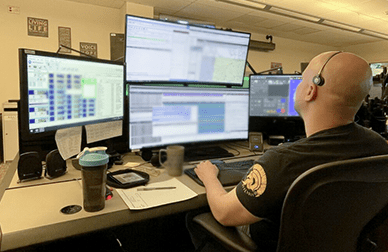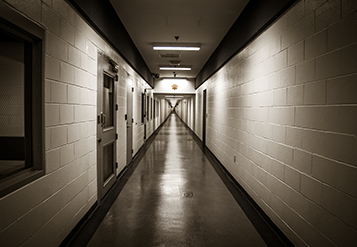Emergency Preparedness If you knew it was coming, how would you prepare?
No one ever thinks it’s going to happen to them until it does. Lightning sparks a wildfire. A river spills over its banks. And suddenly you’re trying to outrace a disaster.
There’s a lot the Sheriff’s Office can do. We can warn you and we can keep you updated on conditions. We can show you how to mitigate danger, but ultimately, your safety, and the safety of your family, is up to you.
That’s why you need to sign up for emergency alerts and register your gate codes. Make a plan before the emergency strikes, before it’s too late.
We’re prepared. You should be, too. Safety is a shared responsibility.
Preparedness Information :
Ongoing severe storms can create hazardous conditions along our creeks and rivers, making them prone to flash flooding and mudslides. This can be hazardous for fisherman, rafters, kayakers and anyone else recreating on and near the water.
Please take these precautions:
- Maintain situational awareness – have your eyes open for hazardous conditions
- Keep children away from rising creeks and rivers
- If possible, have at least one other person with you who can call for help
- If you see debris in the water- get out and move to a safer area
- Use flotation devices
- If you see others who are in danger, please warn them
- If you witness a water emergency, please call 9-1-1
Hazmats are materials that are flammable, corrosive, oxidizing, explosive, toxic, poisonous, radioactive, nuclear and other material that may endanger life and property.
If you have a chemical emergency Call 9-1-1.
If there’s a chemical emergency in the county, dispatchers will activate CodeRed. Please register today to receive critical alerts by email, phone and text.
What Should I Do During A Chemical Emergency?
Industry officials are responsible for notifying emergency officials about any chemical release that may affect the community. Douglas County officials are responsible for warning nearby homes, schools and businesses and recommending appropriate protective actions. Protective actions include either sheltering in place or evacuating. You are responsible for following those instructions to protect yourself and your family.
Shelter in place – Emergency officials may recommend that you “shelter in place” until the chemical release is stopped and winds have dissipated any vapors.
This is how you shelter in place:
- GO INSIDE IMMEDIATELY
Take yourself and anyone near you inside an enclosed structure, whether it’s a house, business, garage, or vehicle. If you know of an invalid or unattended child in your neighborhood, call them and tell them to remain indoors. Keep any pets inside also. Close all doors, windows, and other sources of outside air. Turn off air conditioning or heating systems, and close the fireplace damper to keep chemical vapors from entering. Ceiling fans or rotary fans inside the building can be safely used to keep cool. Gather a portable radio, flashlight, and extra batteries. Move into an interior room, preferably a room with no windows. From the inside of that room, cover any outside doors, windows, ceiling vents, and other sources of outside air with plastic sheeting and masking tape. Place a wet towel or sheet along the bottom of the door sill. If you smell any unusual odor or have trouble breathing, you should sit down, cover your nose and mouth with a damp washcloth, then take slow, shallow breaths and try to stay calm.
- TUNE RADIO TO AM 850
The metro area broadcasts emergency information on radio station at 850 on the AM dial. During a chemical release, AM 850 will continuously repeat instructions about how to shelter in place and provide more information as it’s available. Emergency Alert System (EAS) messages are also broadcast on NOAA Weather Radios and on regular and cable television.
- STAY OFF THE TELEPHONE
County officials may try to telephone your home or business using CodeRed. Do not call police, fire, or 9-1-1 unless you are reporting a police, fire or medical emergency at your location. Overloaded telephone circuits may keep actual emergency calls from getting through.
Should I Try To Evacuate?
You should NOT attempt an evacuation during a chemical emergency unless specifically ordered by officials. Leaving your home or business may expose you to more chemical vapors, especially if you travel toward the leak or through the toxic cloud as it drifts downwind.
What If I Can’t Find Shelter?
Studies indicate that taking shelter is the best response to a chemical release. Even a poorly sealed building or vehicle provides some protection against chemical vapors. If you are inside a vehicle, close your vehicle’s doors and windows, and turn off the vehicle’s air conditioning and ventilation system. Turn on your car radio to AM 850 for more information.
If you can’t get inside, move in a crosswind direction, so the wind is blowing from left to right, or right to left, but NOT directly into your face or from behind you. You can see what direction the wind is blowing by observing nearby trees, flags, or clouds in the sky.
What If My Children Are In School?
The Douglas County School District has installed emergency notification radios (NOAA) in the School District Administration Building, all school buildings, and all county buildings. In addition, the schools have been equipped with School Safe radios, allowing school officials the ability to communicate directly with first responders. This radio system can be instantly activated by dispatchers, so the administrative staff and teachers at your children’s school will be notified in the event of a chemical release. They have been trained how to protect your children and will shelter in place until the emergency is over.
Please do NOT call the school and tie up telephone lines needed by school staff to communicate with district officials. Do not go to the school to try to pick up your child if they are sheltering in place because they’re safer inside than outside or traveling.
Listen to AM 850 for parent information from school officials.
How Will I Know When The Emergency Is Over?
Stay inside, sheltered in place, until you hear the “all clear” message from county officials over CodeRed, or AM 850, or by police loudspeakers.
After the “all clear” signal has been given, open all doors and windows, turn on your air conditioning or heating system, then go outside to let the building “air out” for 15-30 minutes.
Douglas County does not have tornado sirens or a warning system, therefore it’s important for you to have awareness and to make a plan.
We suggest you also buy a “NOAA Weather” radio for urgent weather alerts. You can get one on-line or at most retail outlets. The NOAA radio will warn you about hazards in your specific area.
Depending on where you live, tune in to the following frequencies:
- Douglas County residents who live in the southern portions of the County can access the NOAA Weather Radio, Franktown transmitter, with frequency 162.450MHz.
- Douglas County residents living in the northern portions of the County can access the NOAA Weather Radio, Denver transmitter, with frequency 162.550MHz.
Try both frequencies and choose the one with the best reception!
There are other transmitters in the state, however, ONLY the Denver and Franktown transmitters will provide you with information for Douglas County. Douglas County S.A.M.E. Code: 8035.
Call the Douglas County Sheriff’s Office at 303-660-7500, If it’s an emergency please call 9-1-1.
Here are some signs of terrorism from Ready Colorado.
Surveillance: Terrorists may conduct surveillance to determine a target’s strengths and weaknesses. Be aware of someone who appears to be monitoring security personnel or equipment, or gaging emergency response time. Suspicious activities may include using vision enhancing devices or cameras, acquiring floor plans or blueprints, drawing diagrams and showing interest in security and access to facilities.
Elicitation: People or organizations attempting to gain information about military operations, capabilities, or people. Elicitation attempts may be made by mail, email, telephone, in person or even by gaining employment at the location.
Tests of security: Any attempt to measure reaction times to security breaches, attempts to penetrate physical security barriers, or monitor procedures in order to assess strengths and weaknesses.
Funding: Terrorists need to raise money for their operations and spend it in a way that doesn’t draw attention. Be aware of unusually large transactions paid with cash or gift cards, collections for donations and solicitations for money.
Supplies: To conduct an attack, terrorists may need a variety of supplies, such as weapons, uniforms, badges, and communication systems.
Impersonation: Terrorists may impersonate law enforcement officers, firefighters, mail carriers, or company employees to gain information. Someone who seems suspicious in what they say or do on the job could be a red flag.
Rehearsal: Terrorists often rehearse a planned attack to make sure their operation runs smoothly. This may include measuring response time by emergency responders, mapping routes and determining the timing of traffic lights.
Deployment: This is when terrorists are putting their plans into place, getting into position, and moving equipment and supplies. If you observe this type of activity, this is your last chance to alert authorities before the attack is launched. If you believe there is imminent danger, call 911 immediately.




